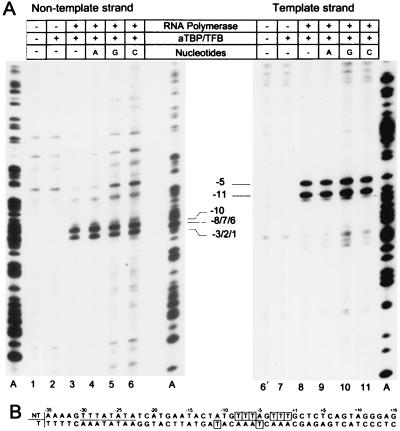FIG. 3.
Open complex formation. (A) Transcription reaction mixtures for open complex formation were assembled as described in Materials and Methods. Linearized pIC-31/2 wild-type DNA was incubated with the components indicated on top of each lane for 20 min at 55°C. After treatment with KMnO4, the hyperreactive sites on the nontemplate (lanes 1 to 6) and the template strand (lanes 6′ to 11) were analyzed by asymmetric PCR using radioactive labeled primers. Positions of reactive thymidine residues were determined by comigration of a sequence ladder terminated with ddATP and are indicated in relation to the transcription start site. Compare the following: lanes 1 and 6′, without protein and nucleotides as a control; lanes 2, 3, 7, and 8, without nucleotides; lanes 4 to 6 and 9 to 11, in the presence of 20 μM ATP (A), GTP (G), or CTP (C). (B) DNA sequence of plasmid pIC-31/2 containing the promoter and the region of the transcription start site. The positions of the modified thymidine residues are boxed. Position numbers refer to the transcription start site.

